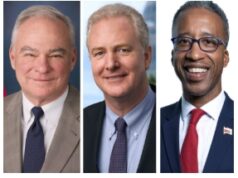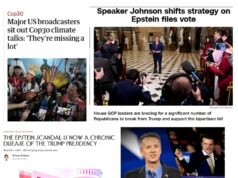
We have at this particular stage a fiat currency which is essentially money printed by a government and it’s usually a central bank which is authorized to do so. Some mechanism has got to be in place that restricts the amount of money which is produced, either a gold standard or a currency board, because unless you do that all of history suggest that inflation will take hold with very deleterious effects on economic activity… There are numbers of us, myself included, who strongly believe that we did very well in the 1870 to 1914 period with an international gold standard.
Even more stunning was hearing Greenspan question whether or not we even need a central bank (i.e., the Federal Reserve); he also claimed that the housing bubble was not his fault, if anything, it was “the Fed’s,” as if he himself was not really “the Fed” at the time.
Upon hearing these sentiments from Greenspan, who was actually the architect of the very policy of printing enormous amounts of “fiat money,” creating the housing bubble and the subsequent collapse, Richard Russell of Dow Theory and a leading analyst of the stock market, was incredulous… in fact, he pronounced himself disgusted, saying “it’s becoming painful to listen or read Alan Greenspan’s constant squirming as he seeks to rewrite his incredible mistake in creating the disastrous housing bubble.” Notwithstanding the distaste of some insiders (like Russell) for Greenspan, once he adds his Maestro’s opinion to that of Ron Paul and the others, it is clear that Americans are being subjected to another well constructed campaign to create a groundswell of public opinion in favor of a return to the gold standard, much as we are being subjected to a concerted campaign to reduce the federal deficit, and a campaign to de-construct Social Security and other so-called entitlements.
You will recall that international trade throughout most of human history settled its accounts by exchanging gold, or occasionally silver. After the Revolution, the United States was at first on a bi-metal standard of gold and silver, but after 1834 gold became the de facto standard backing paper money; this was formalized by Congress in 1900. From 1880-1914 was what some call the classical gold standard period; inflation was held to about 0.1 percent, which of course made bond holders and investors very happy. The expenses of World War I forced England and other combatants to modify the system.
President Franklin Roosevelt on 5 April 1933 signed Executive Order 6102 which effectively confiscated private “hoarding” of gold coin, bullion, and certificates in the midst of the Great Depression as a weapon to deal with the banking crisis. The private right to own gold was not restored until 1985, when President Reagan signed legislation. After Wold War II, the Bretton Woods system established the U.S. dollar as the world’s reserve currency. It was used to settle world trade debts, and the U.S. agreed to redeem dollars in gold if requested- a sort of modified gold standard. In August 1971 President Nixon, on the advice of Secretary of the Treasury John Connolly, and Paul Volcker, issued an Executive Order taking America off the gold standard, and permitting the dollar to “float.” Nixon had compelling reasons to do this, and he sold it to the American voters as a means to protect the American worker from foreign competition, and American manufacturing from unfair foreign competition. Listen to what he had to say:
http://www.youtube.com/watch?f…
Does any of his rationale sound familiar, did the situation in 1971 bear any resemblance to our situation today? Well, Yes, and No, but I find it interesting that the Republican answer to a trade imbalance, budget deficits, fear of inflation, and to what amounted to a trade war to be quite different from the Republican answers today.
If we were to return to a gold standard today (and Ron Paul says it could be done with another Executive Order) we would have to reindex the monetary base to bring it into alignment with the current price of gold. In the 1880’s the price of gold was set at $20.67 an ounce. Today, the United States owns around 263 million troy ounces of gold (we are still the world’s biggest holder of gold); the Federal Reserve’s monetary base is at $1.7 trillion, which means that “the price of gold at which the US dollars would be fully gold-backed is… around $6,300.” The dollar obviously has depreciated since the 1880’s.
I am reminded of William Jennings Bryan’s Cross of Gold Speech in 1896, when Bryan, a populist, objected to the wealthy Eastern financial elite’s insistence on a gold standard. He advocated the more inflationary bi-metal (gold and silver) standard, because mild inflation was beneficial to debtors, workers, and the general population, whereas the strict gold standard served only the financiers and Wall Street. Well, now, there you have it. The same division of interests, the same Wall Street greed, the same bond holders and investors versus the exploited “lower classes” in the late 19th century is being played out once again in the opening decades of the 21st century. Plus ca change….



![Saturday News: “Trump’s latest tariff TACO probably won’t make your life more affordable”; “The Epstein Email Cache: 2,300 Messages, Many of Which Mention Trump”; “[MTG] questions if Trump is still the ‘America First’ president”; “Jim Ryan tells all: ‘What did the Governor know, when did he know it?’”](https://bluevirginia.us/wp-content/uploads/2025/11/montage1115-238x178.jpg)








![Saturday News: “Trump’s latest tariff TACO probably won’t make your life more affordable”; “The Epstein Email Cache: 2,300 Messages, Many of Which Mention Trump”; “[MTG] questions if Trump is still the ‘America First’ president”; “Jim Ryan tells all: ‘What did the Governor know, when did he know it?’”](https://bluevirginia.us/wp-content/uploads/2025/11/montage1115-100x75.jpg)
